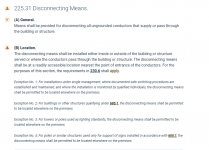WattsaVA
Member
- Location
- Blountville, Tennessee
- Occupation
- Electrician
I have a detached garage that I am rewiring for a customer. Putting in a sub-panel for three circuits. I need GFCI protection for at least one circuit. I could GFCI protect all circuits. My question is if I use a MLO panel in the garage and do not have a main breaker can I install a GFCI breaker in the main panel in the house to feed the entire sub-panel. I need to replace the breaker in the house that is feeding the sub-panel and it would save money to not have a main in the sub-panel since one is not required for only three circuits. But, since I need GFCI protection for one circuit it makes more sense to protect the whole sub-panel from the breaker in the house. Will a GFCI breaker in the house detect a ground-fault anywhere down stream on multiple circuits? The way I understand, it seems like it should. Any thoughts?


